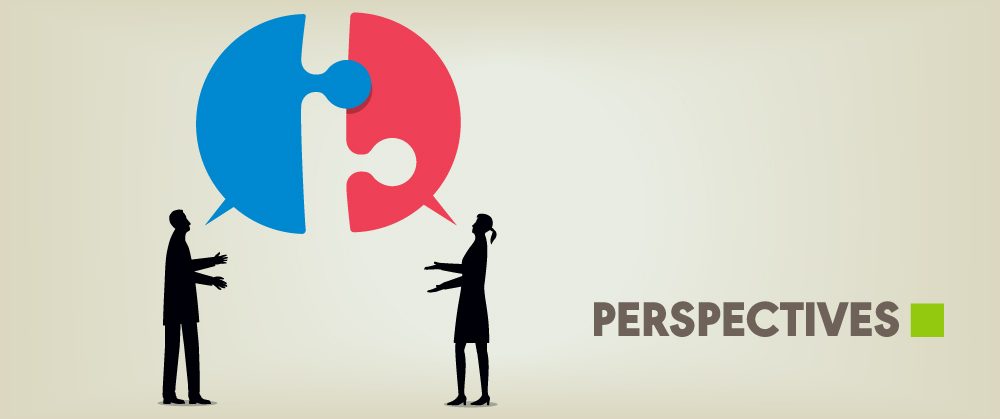Latest Forum From Perspectives Tackles SLI/DLD Terminology Discussion
Children with language impairments face many barriers to assessment in the clinical setting. Aside from being under-identified, there is also not a consensus on how to label the unique challenges these children face. The latest forum from Perspectives of the ASHA Special Interest Groups focuses on two often used terms—specific language impairment (SLI) and developmental language disorder (DLD).
The SLI and DLD labels have two different, but not incongruous, definitions. Children with SLI—a label that has been used since the 1980s—have a language impairment that is not based on a known medical condition and have a nonverbal IQ score higher than 85. Meanwhile, children with DLD—a label first used in 1961 but that has gained traction particularly since 2017—have language impairment relative to peers that isn’t associated with a known medical condition such as brain injury, cerebral palsy, sensorineural hearing loss, autism spectrum disorder, or intellectual disability, although they may have a nonverbal IQ score lower than 85 (Volkers, 2018).
Perspectives SIG 1 Editor Laura Green writes in her introduction that “terminology has bearing on the lives of the parents and children whom we serve” (Green, p. 4). Thus, this forum explores the role that a lack of consensus on labeling plays in diagnosis, advocacy, and service delivery in the schools.
After the introduction by Green, Laurence B. Leonard puts the entire forum in perspective with an article chronicling 200 years of terminology in language disorders. Leonard (2020) cautions that “the field was not well served by the many changes in terminology that have transpired in the past” (Leonard, 2020, p. 6) but that we can learn from past mistakes. Leonard also points out that the evidence base for SLI is much larger than that of DLD and, no matter which term one uses, “For the sake of our science, we cannot afford to have many hundreds of findings in the literature left unread” (p. 10).
A comprehensive review of the SLI literature from Mabel Rice follows, in which she challenges the assertions of some that SLI and DLD are clinically equivalent and that DLD can be used as a term for both. Rice summarizes numerous studies of children with SLI and discusses the characteristics, language development, and clinical markers for this population.
The forum shifts to DLD in the next article by Rhea Paul, who details her work on the CATALISE¹ Consortium, which first proposed a consensus on the DLD term. Paul also discusses how the term relates to labels used in the Diagnostic and Statistical Manual of Mental Disorders (5th ed., DSM-V; American Psychiatric Association, 2013) and the Individuals with Disabilities Education Act of 2004 (IDEA).
Karla K. McGregor and colleagues discuss practical application of the DLD diagnosis in the next article. The authors compare and contrast DLD and SLI, summarize recent advocacy efforts for the DLD term, and apply the diagnosis in the scope of clinical practice.
The forum ends with an article by Kimberly A. Murza and Barbara J. Ehren, exploring the relevance of the SLI/DLD terminology discussion from the perspective of the public-school speech-language pathologist (SLP). The authors acknowledge that an official label change comes with a variety of benefits and challenges in areas like public awareness, advocacy, and school priorities. The article ends with recommendations for school- and university-based SLPs regarding labeling issues.
In her introduction, Green explains that the purpose of the forum is to “provide relevant context as we move forward in our assessment and treatment of and advocacy for children who struggle with language” (Green, p. 4). By focusing on the application of labeling issues to clinical practice, the authors showcase the unique purpose of Perspectives, bridging the gap between research and practice and advancing knowledge translation.
We’d like to thank Dr. Green and all of the authors for their work advancing the conversation about the DLD and SLI labels, and we hope that readers will enjoy the thoughtful discussion. See the “Related Media” section at the bottom of the page for a video of Dr. Green discussing the important issue of terminology. You can read the entire forum here or explore the individual articles below.
References
American Psychiatric Association. (2013). Diagnostic and statistical manual of mental disorders (5th ed.). Washington, DC.
Individuals with Disabilities Education Act of 2004, 20 U.S.C. § 1400 et seq. (2004). https://sites.ed.gov/idea/statuteregulations/
Volkers, N. (2018). Diverging views on language disorders. The ASHA Leader, 23(12), 44–53. https://doi.org/10.1044/leader.FTR1.23122018.44
Explore the Forum
Green, L. B. (2020). The Specific Language Impairment/Developmental Language Disorders forum: Fostering a discussion of terminology. Perspectives of the ASHA Special Interest Groups, 5(1), 3–5. https://doi.org/10.1044/2019_PERSP-19-00184
Leonard, L. B. (2020). A 200-year history of the study of childhood language disorders of unknown origin: Changes in terminology. Perspectives of the ASHA Special Interest Groups, 5(1), 6–11. https://doi.org/10.1044/2019_PERS-SIG1-2019-0007
McGregor, K. K., Goffman, L., Owen Van Horne, A., Hogan, T. P., & Finestack, L. H. (2020). Developmental language disorder: Applications for advocacy, research and clinical service. Perspectives of the ASHA Special Interest Groups, 5(1), 38–46. https://doi.org/10.1044/2019_PERSP-19-00083
Murza, K. A., & Ehren, B. J. (2020). Considering the language disorder label debate from a school speech-language pathology lens. Perspectives of the ASHA Special Interest Groups, 5(1), 47–54. https://doi.org/10.1044/2019_PERSP-19-00077
Paul, R. (2020). Children’s language disorders: What’s in a name? Perspectives of the ASHA Special Interest Groups, 5(1), 30–37. https://doi.org/10.1044/2019_PERS-SIG1-2019-0012
Rice, M. L. (2020). Clinical lessons from studies of children with specific language impairment. Perspectives of the ASHA Special Interest Groups, 5(1), 12–29. https://doi.org/10.1044/2019_PERSP-19-00011
¹ CATALISE = Criteria and Terminology Applied to Language Impairments: Synthesizing the Evidence









